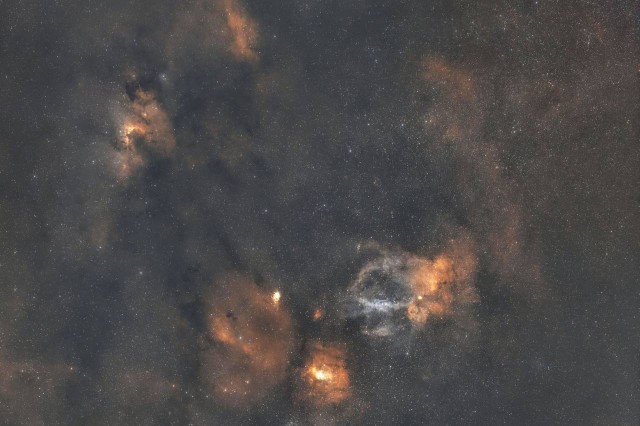IKBFU astronomers captured an image of two emission nebulae located in the Cassiopeia constellation, approximately 10,000 light-years from the Solar System. The astrophotograph was taken by Andrey Sidorov over the course of ten hours.
On the right side of the image is nebula SH2-157, nicknamed the “Lobster Claw” for its distinct shape. Just below and to the left lies SH2-162 (NGC 7635), commonly known as the Bubble Nebula. Although the visible size of these nebulae spans tens of arcminutes, they remain invisible to the naked eye, even under ideal observing conditions.

Both objects are emission nebulae — glowing clouds of interstellar gas ionized nearby stars and scattered dust particles. The nebulae are known as areas of active star formation, which gives rise not only to their radiant glow but also to their intricate structures.
The images were captured using a modern technique involving a system of color filters. A ZWO 533MM Pro astrophotography camera with a Samyang 135mm f2.2 lens was used in combination with green, blue, and red filters. The filtered images were then merged to create a final composite image.
The project was completed within the framework of the Decade of Science and Technology.
User profile for student
User profile for student
I give consent to the processing of the personal data provided, with Personal Data Processing Policy acquainted
Confirm consent